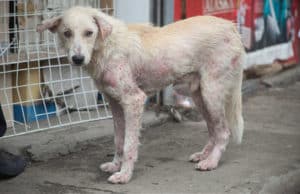The Danger and Risks of Using Heat to Relieve Scabies Itching
In this article, we unravel the risks and dangers tied to using heat for scabies relief. Yet, beyond the promise of comfort, there’s a hidden tale where the relief we seek might come with unforeseen complexities. Join us as we uncover the risks and navigate through the challenges of using heat to treat scabies. In doing so, we aim to understand how seeking relief for scabies itching may harbor unforeseen dangers (risk of burns, delayed treatment, skin sensitivity, etc.).
Remember, medical professionals forbid the use of heat directly on human skin for scabies, due to the risk of severe harm and injuries. However, it’s safe and effective for items like towels, bedding, clothes, blankets, pillows, and rugs. Laundering these items at high temperatures can effectively eliminate and eradicate scabies mites along with their eggs.
So, let’s delve into the risks and dangers associated with using heat to relieve scabies itching and find a more informed approach to soothing the skin.
Burning Perils: Risks of Scabies Heat Treatment
Foremost, avoid using heat as a scabies remedy; it’s a risky and unwise choice. Please avoid applying heat directly to your skin, like using hot water or heating pads, to prevent burns and skin damage. Furthermore, it is advisable to be careful and avoid trying out any unknown or unverified information or products found on the internet, and remember, “Not everything on social media is a safe solution.” Seek guidance from a dermatologist for safe and effective scabies management. Prioritize conventional treatments to avoid skin damage and reduce the risk of infections.
Moreover, it’s important to note that while the skin can tolerate temperatures ranging from 37 to 40 degrees Celsius (98.6-104 degrees Fahrenheit), exposure to hot water above 50°C / 122 °F may result in third-degree burns within five minutes. Furthermore, surpassing 52 degrees Celsius (125 degrees Fahrenheit) can lead to full-thickness burns in a mere two minutes. This highlights the potential risks of excessive heat on human skin, leading dermatologists to strongly advise against such practices.
Delayed Treatment
The heat from warm water or heated pads offers temporary relief by targeting the surface mites, providing momentary comfort from itching. But it doesn’t eliminate the scabies eggs. Relying solely on heat to treat scabies poses several risks and dangers. Firstly, it may lead to delayed medical intervention, allowing the infestation to persist longer. This delay can result in increased severity of scabies symptoms. Additionally, prolonged infestation raises the risk of spreading scabies to others. While using heat may offer temporary relief, the risks associated with delayed medical treatment underscore the importance of seeking professional guidance for effective and safe scabies rash treatment.
Skin Sensitivity
When relying solely on the heat as a scabies treatment, which provides only temporary relief, this may increase the irritation. Here are the skin sensitivity risks:
- Heightened irritation: Constant exposure to heat may amplify the existing irritation.
- Exacerbation of rashes: Heat can potentially worsen skin rashes, making them more pronounced and uncomfortable.
- Potential allergic reactions to heat sources: Some individuals may develop allergic responses to prolonged exposure to heat.
- Increased discomfort: Continuous use of heat might lead to heightened discomfort.
- Prolonged healing time for irritated skin: Skin sensitivity issues can prolong the healing process, delaying relief from scabies symptoms.
It’s important to be aware of these risks when considering heat as a remedy for scabies.
In conclusion, it is imperative to consult a dermatologist for a comprehensive scabies management plan. Properly prescribed medication and treatments, such as Permethrin, Ivermectin, Crotamiton, Benzyl benzoate, and Sulfur ointment, remain the most effective ways to get rid of scabies.
How to get rid of scabies properly?
Let’s talk about the right way to get rid of scabies. As mentioned earlier, using heat comes with risks. Now, let’s dive into the proper approach for a scabies-free life. Ready to learn how to eliminate scabies effectively and prevent reinfestation? Follow these essential steps:
-
Seek Medical Diagnosis:
Seeking medical advice is essential when dealing with skin issues. Conditions such as eczema, dermatitis, and allergic reactions can look like and mimic scabies symptoms. A dermatologist can accurately diagnose your condition, ensuring the right treatment path.
-
Prescription Medication and Full Course:
Follow the prescribed treatment plan, including medications like Permethrin or Ivermectin, and ensure completion of the full course.
-
Clean, Disinfect, and Vacuum for a Scabies-Free Home:
Unlike the risks we discussed earlier with using heat directly on your skin as a remedy for your scabies rash, using heat to clean, disinfect, and vacuum, your living space is a game-changer. Think of heat as your superhero in this situation, since it effectively kills scabies mites and their eggs, making sure they won’t come back. Focus on washing and heat-treating items like bedding, towels, and clothes. Vacuuming surfaces and objects like carpets, upholstery, and mattresses can further aid in eliminating scabies from your home.
-
Avoid and Inform Close Contacts:
To prevent the transmission of scabies, limit close contact during medical treatment. Inform family members and coworkers about the issue so that they can take appropriate precautions. Your surroundings should also receive treatment, even if they are asymptomatic. This helps prevent the spread of the infestation.
-
Follow-up with the dermatologist:
Make sure to stay in touch with your dermatologist regularly. Those appointments are your key to properly getting rid of scabies. Trust your dermatologist’s expertise to provide clear, healthy skin.
By adhering to these guidelines and seeking advice from a qualified medical expert, you can ensure that you are taking the necessary steps to maintain your health and well-being. By following the right approach, you can get rid of scabies and ease the itching and discomfort that come with it. Take action now to eliminate this condition and start feeling better.
Conclusion
In conclusion, it’s crucial to be aware of the associated risks and dangers when using heat irrationally. The warmth from sources like warm water baths, warm compresses, or heat pads can complement traditional medical treatment, offering relief without harming the skin when used cautiously and under medical advice.
Importantly, scabies is a treatable condition, and successful eradication is possible with the right approach. Always consult a healthcare professional for guidance and incorporate heat therapy cautiously within a comprehensive treatment plan for optimal results.
Additional insights
Ready for more insights? Dive into our other articles for additional tips on maintaining a healthy, itch-free lifestyle. Click Here and explore further.
Resources
For those seeking further knowledge on scabies and its treatments, here are some recommended resources:
- “Advancements in Scabies Research“ – A compilation of recent scientific studies on scabies.
- “Scabicidal effect of heat” experimental study; Indian Journal of Dermatology, Venereology, and Leprology.
- Burns Elika Hoss, MD, Assistant Professor of Dermatology, Mayo Clinic, Scottsdale, AZ., and the A.D.A.M. Editorial team, accredited by the American Accreditation Healthcare Commission (www.urac.org).





